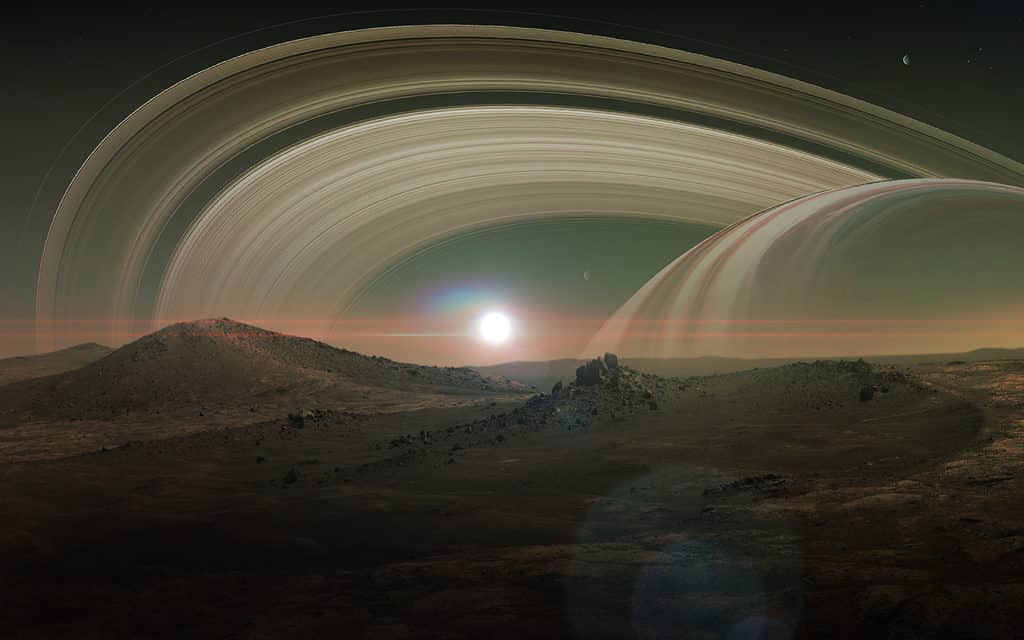Introduction
Saturn is the sixth planet from the Sun, distinguished by its large rings surrounding the outside of the planet’s atmosphere. Its rings are made of chunks of rock and ice, perpetually trapped in orbit around the planet. While Saturn’s rings are solid, the planet is believed to be made completely of gas, with an atmosphere of hydrogen and helium. The planet completes a full rotation around its axis around every 11 hours but takes almost 29 Earth years to fully orbit the sun. There are 53 confirmed moons that orbit Saturn, making it the planet with the second-highest amount of moons behind Jupiter.

A view of Saturn from Titan, one of Saturn’s moons. Image elements furnished by NASA.
©Vadim Sadovski/Shutterstock.com
Mass
Saturn is 95 times heavier than Earth, with a mass of 5.683×1026 kilograms (1.253×1027 pounds). While the planet is made entirely of gas, its massive size contributes to its mass. The gaseous makeup of the planet makes it even less dense than water, meaning that it could float on top of a body of water if it was placed in one.
Surface Area
Saturn is the second largest planet in the solar system, meaning it has a huge surface area. The total surface of Saturn spans 42,612,133,285 square kilometers (16,452,636,641 square miles). This is around 84 times larger than the surface area of Earth, showing the great size of the ringed planet truly is.
Diameter
The diameter of Saturn is almost ten times larger than Earth’s diameter. From one end to another, the planet measures 116,500 kilometers (72,400) miles. The diameter in between the planet’s two poles measures 108,728 kilometers (67,560 miles) in length. This makes Saturn the planet that is most flattened at its poles in the solar system. The term for flattened is oblate, and this oblate shape can be observed in many images of Saturn as well as when it is viewed from a telescope.
More Information About Saturn

The diameter of Saturn is almost ten times larger than Earth’s diameter.
©iStock.com/Elen11
While Saturn is thought to be uninhabitable by any form of life due to its gaseous structure, it has been visited by spacecraft four times. The spacecraft Cassini entered Saturn’s orbit in 2004 with the primary purpose of studying the rings around the planet. The spacecraft was in Orbit for around 13 years. It collected an abundance of information about the makeup of the rings. Also the craft learned how the planet interacts with its numerous moons. In 2017 the Cassini spacecraft submerged itself within Saturn’s atmosphere. This prevented it from damaging any of the rings it had so closely studied. The spacecraft disintegrated amongst the gases on Saturn’s surface after providing over a decade worth of valuable information about the planet and beyond.
The photo featured at the top of this post is © iStock.com/EzumeImages
Thank you for reading! Have some feedback for us? Contact the AZ Animals editorial team.






